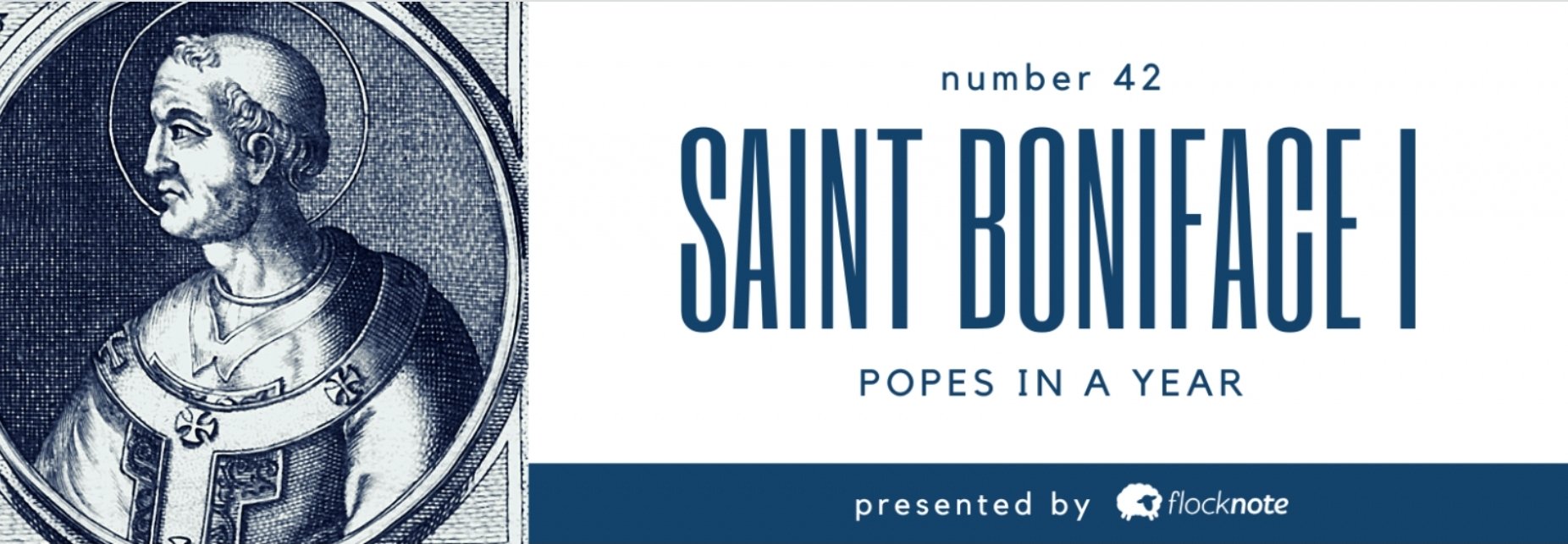
Died: 422 A.D.
pronounced BAWN-ih-fuss (not “bony face”)
Give me the scoop on Boniface I.
Elected on December 28, 418, St. Boniface I reigned as pope for nearly four years. He’s described in The Catholic Encyclopedia as being “a priest highly esteemed for his charity, learning, and good character.” All records point to Boniface getting on in years by the time of his election, having purportedly been ordained by Pope St. Damasus I at least 30 years prior.
Boniface continued to deal with the drama-fest in Gaul (western Europe) created by his predecessor, St. Zosimus, but calmed some nerves by restricting Bishop Patroclus’ power there. He also supported his contemporary, St. Augustine, in battling the Pelagian heresy in Africa. Boniface died on September 4, 422, and was buried near the tomb of St. Felicity, one of his favorite saints. His feast day is celebrated on October 25.
What was he known for?
St. Boniface I dealt with trouble from the very beginning of his papacy – even before he was elected. After the death of Zosimus, a group of rogue churchmen decided to take over the Basilica of St. John Lateran and elect their own pope, Eulalius. Rolling their eyes and saying, “seriously, no,” the majority of clergy in Rome got together the following day (December 28) and elected Boniface.
Though Roman Emperor Honorius favored Eulalius as pope, he had both men exiled until the mess could be sorted out. This schism continued for 15 weeks, ultimately ending when Eulalius defiantly returned to Rome, wanting to celebrate Easter Mass. Surprisingly, the stunt only infuriated Honorius, so the emperor – tired of Eulalius’ hogwash – decided to rule in favor of Boniface, declaring him the true pope.
Fun Fact…
After dealing with all the Eulalius hullabaloo, Boniface wanted to ensure it didn’t happen again when he died. So, he petitioned the emperor and had a law enacted declaring that in situations when two or more claimed the papal throne, none would be recognized and a new election would be held.
What else was going on in the world at the time?
The great St. Jerome, who gave us the official Latin translation of the Bible (the Vulgate) among many other things, died on September 30, 420.
Coming tomorrow….Pope St. Celestine I
SOURCES (and further reading)
John, E. (1964). The Popes: A concise biographical history. New York: Hawthorn Books.
Pope St. Boniface I – http://www.newadvent.org/cathen/02658a.htm
Pope Boniface I – https://en.wikipedia.org/wiki/Pope_Boniface_I
420 – https://en.wikipedia.org/wiki/420
Sent by Matthew Sewell